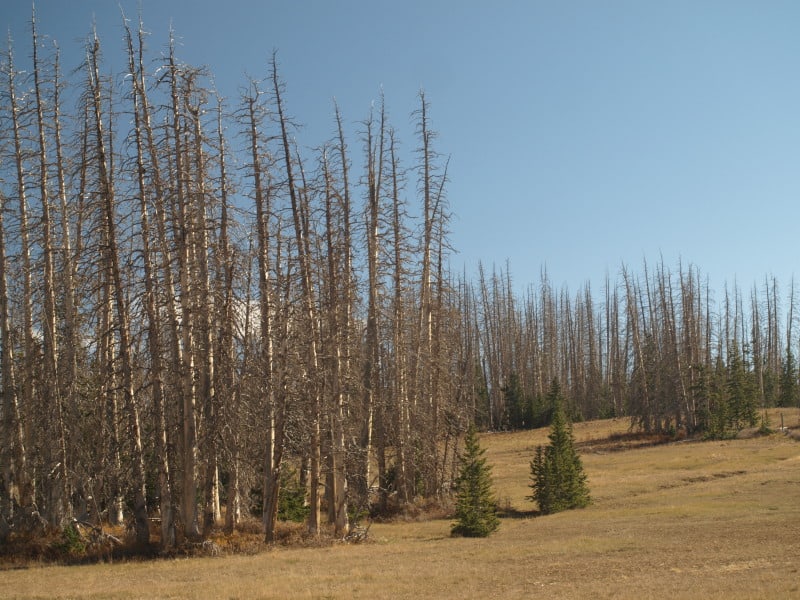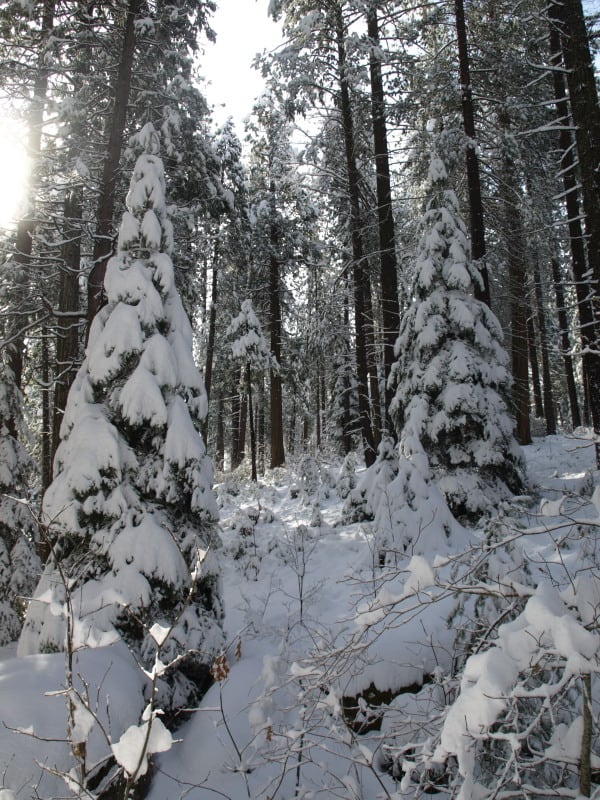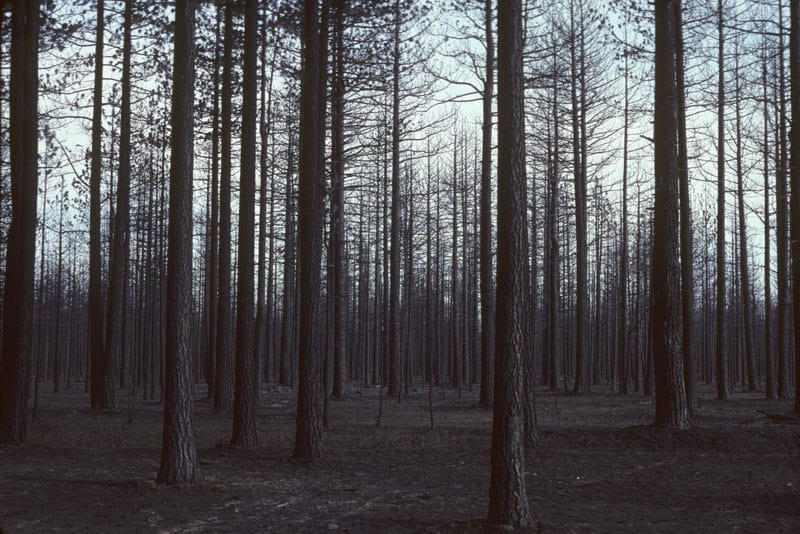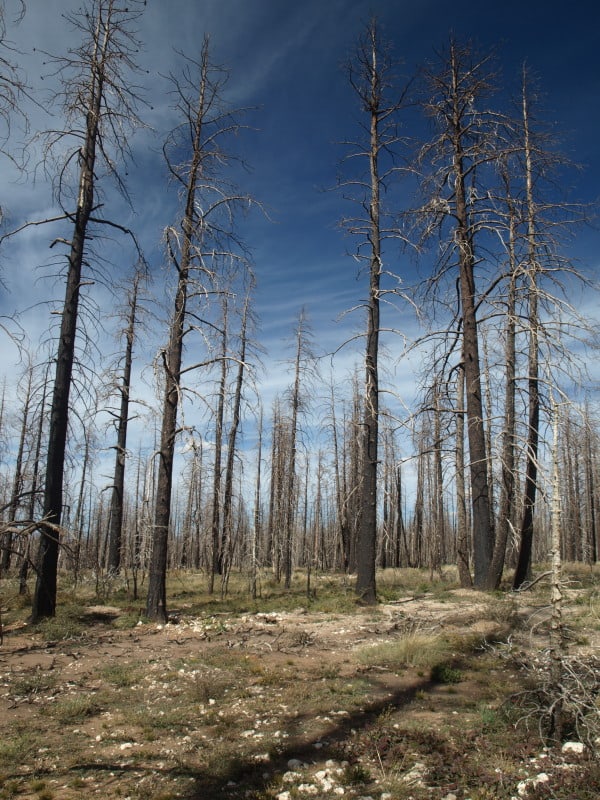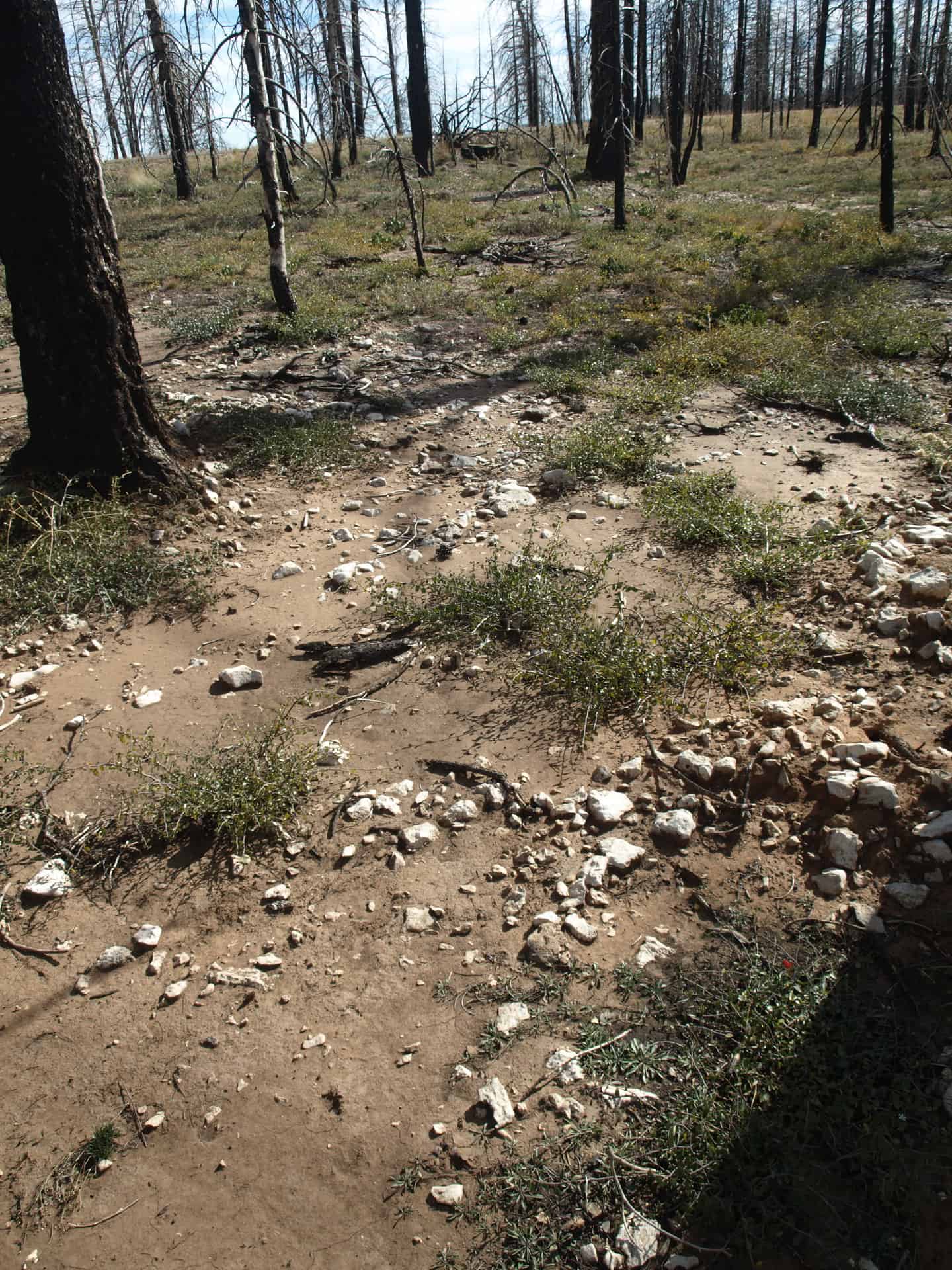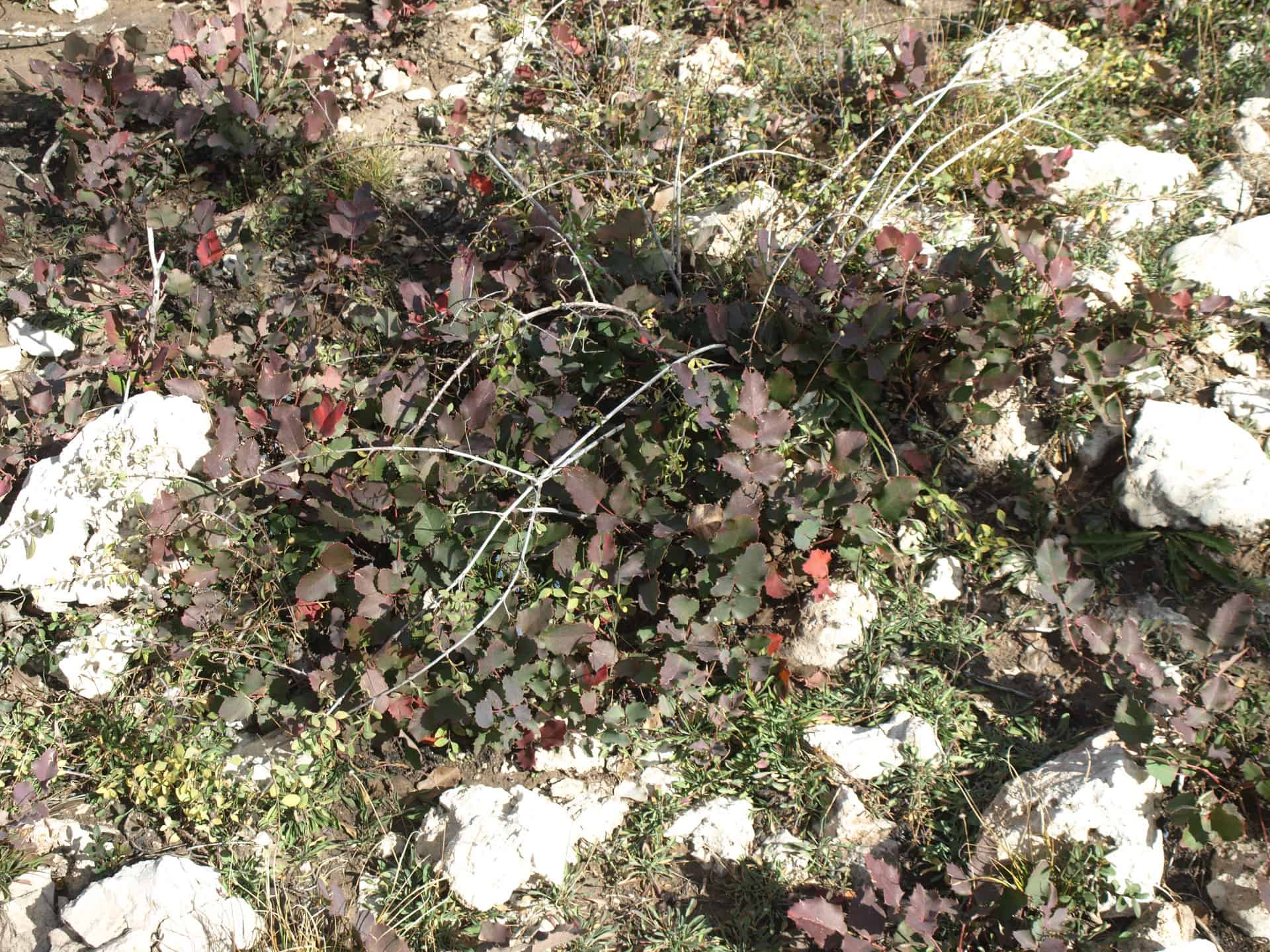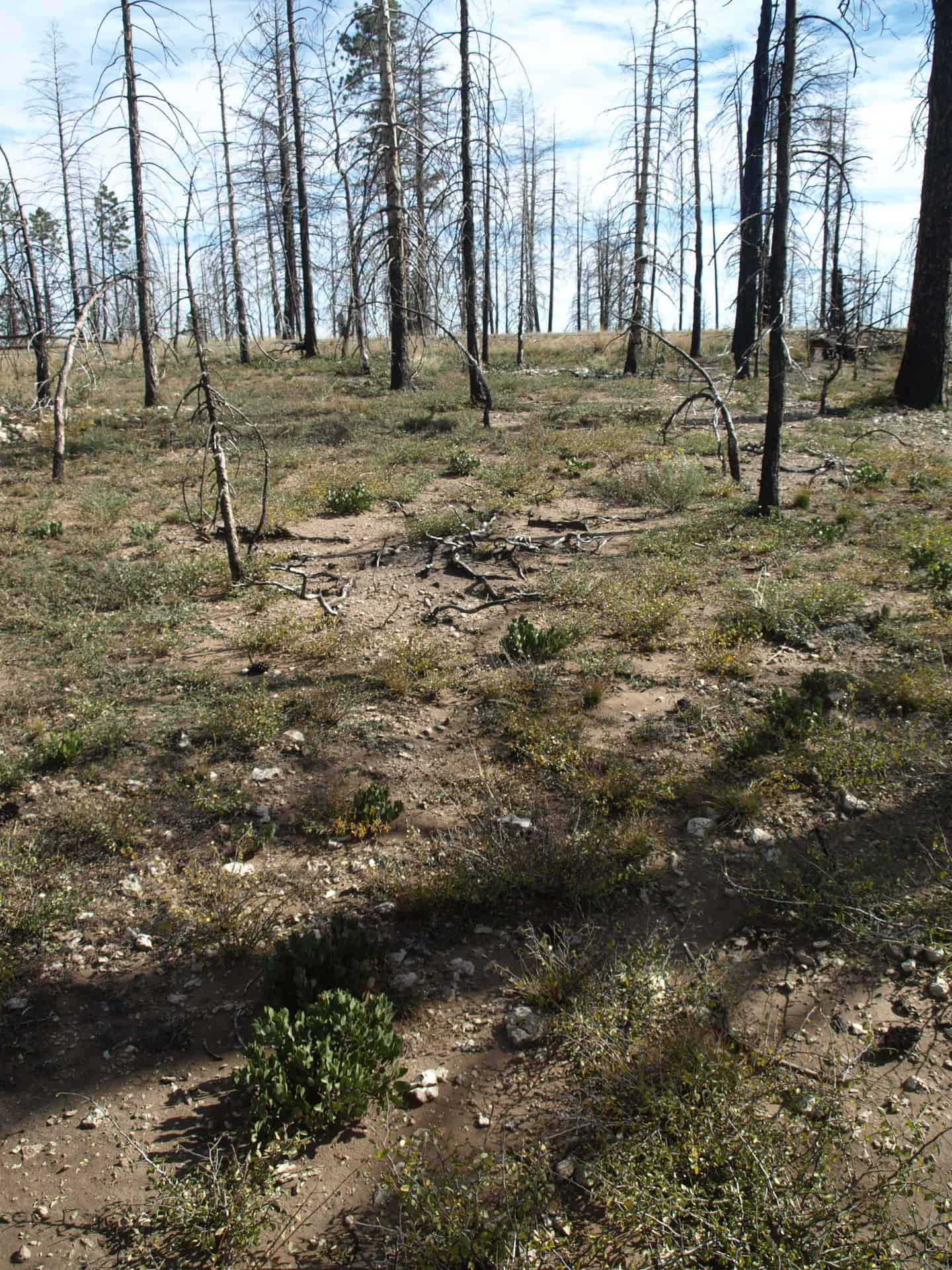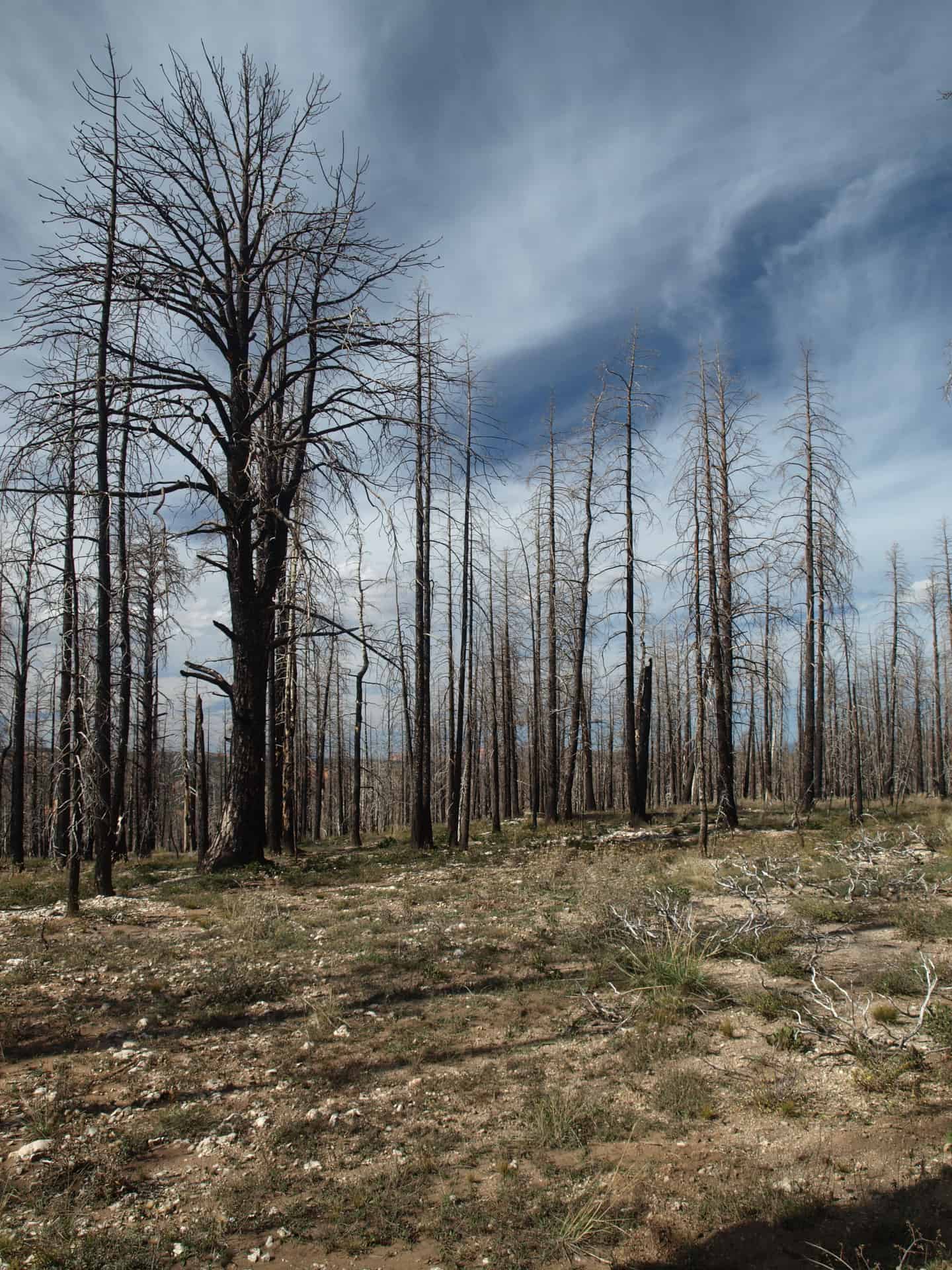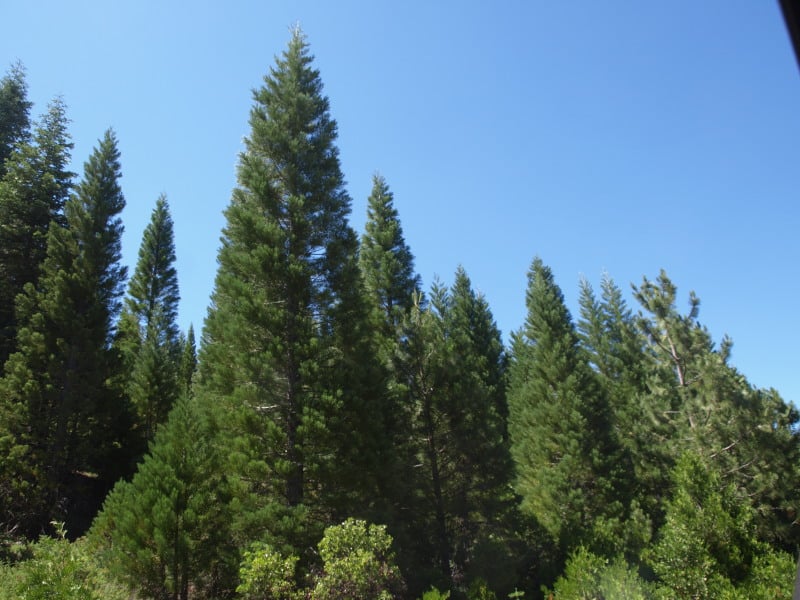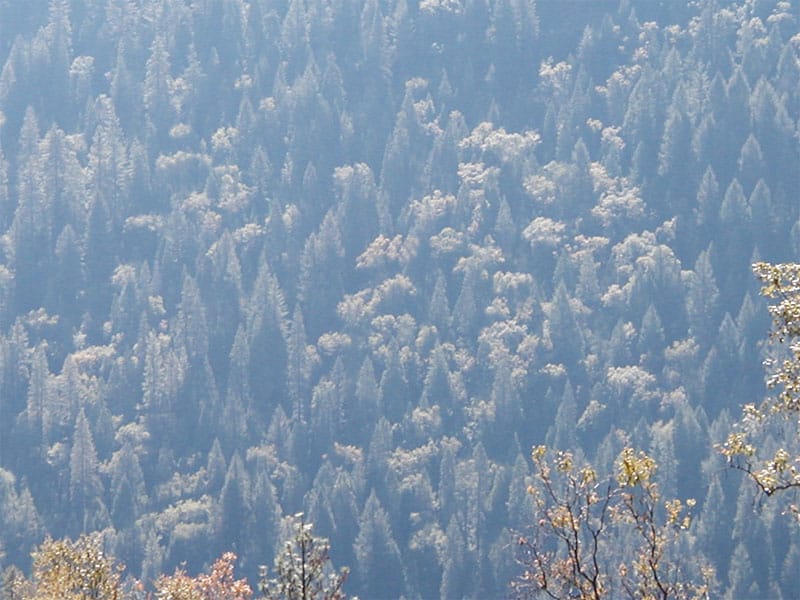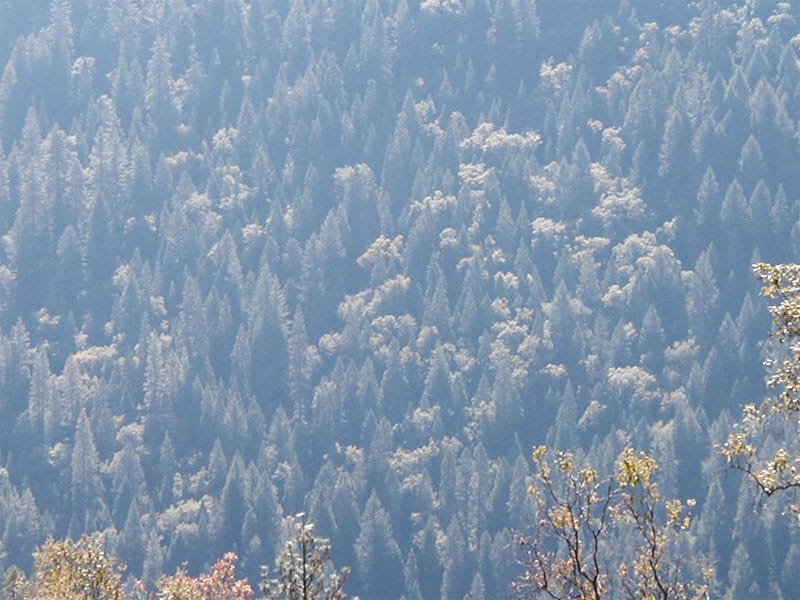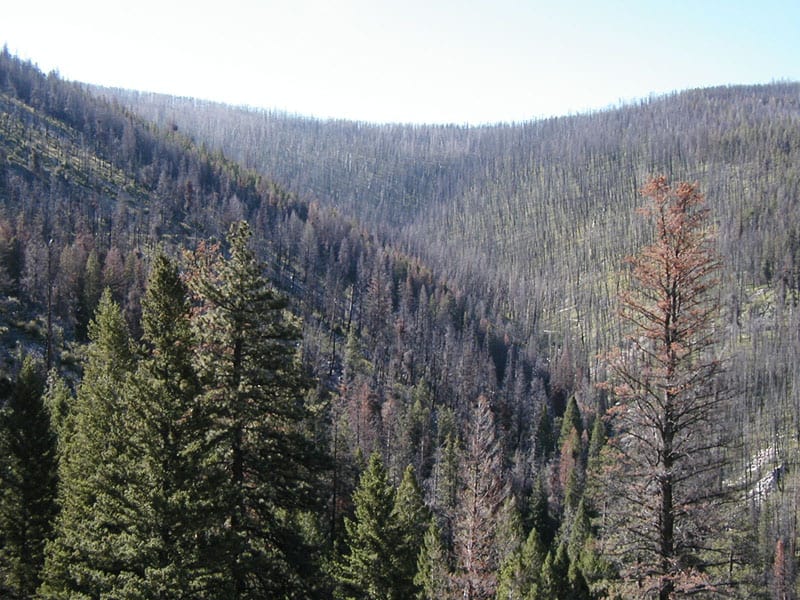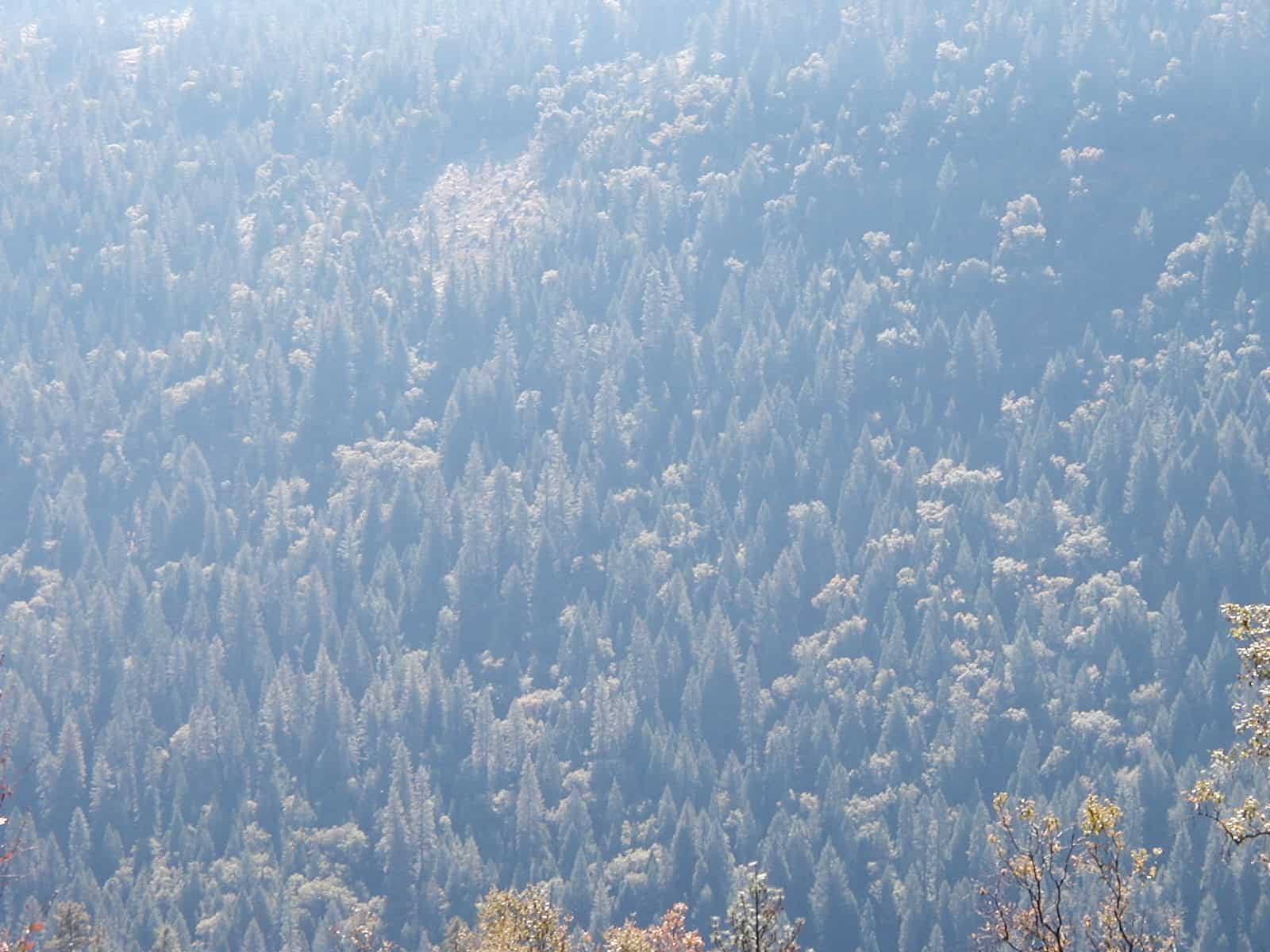This picture is located within the Cedar Breaks National Monument, where conifer mortality is quite excessive. There is really not much that can be done with this situation, other than spending lots of money to fell, pile and burn. Within the Dixie National Forest, this mortality dominates the upper elevations. Even at this altitude of over 10,000 feet, the land is very dry for 9 months, except for seasonal lightning storms. Like some of our public lands, we need a triage system to deal with such overwhelming mortality and fuels build-ups. In this example, we are too late to employ a market-based solution, which would do more non-commercial work.
I have seen this area over many years, and have watched as forests die and rot, with catastrophic wildfire being the “end game”. Anyone venture a guess at what will grow here, in the future?
